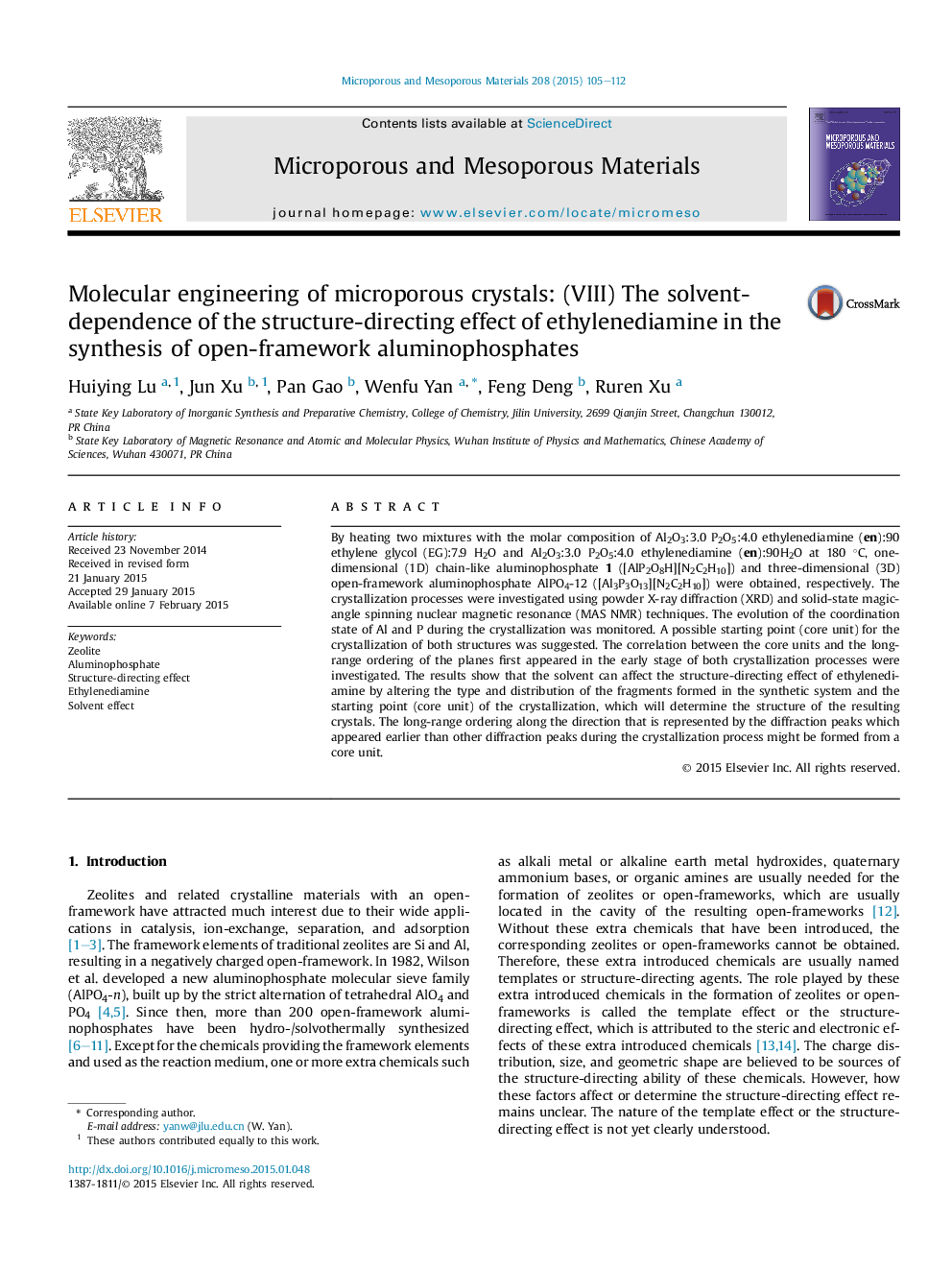| Article ID | Journal | Published Year | Pages | File Type |
|---|---|---|---|---|
| 72633 | Microporous and Mesoporous Materials | 2015 | 8 Pages |
•The solvent can affect the structure-directing effect of ethylenediamine.•The crystallization processes of aluminophosphates were characterized.•The possible starting points of crystallization (core units) were suggested.•The ways how the solvent affects the structure-directing effect were investigated.
By heating two mixtures with the molar composition of Al2O3:3.0 P2O5:4.0 ethylenediamine (en):90 ethylene glycol (EG):7.9 H2O and Al2O3:3.0 P2O5:4.0 ethylenediamine (en):90H2O at 180 °C, one-dimensional (1D) chain-like aluminophosphate 1 ([AlP2O8H][N2C2H10]) and three-dimensional (3D) open-framework aluminophosphate AlPO4-12 ([Al3P3O13][N2C2H10]) were obtained, respectively. The crystallization processes were investigated using powder X-ray diffraction (XRD) and solid-state magic-angle spinning nuclear magnetic resonance (MAS NMR) techniques. The evolution of the coordination state of Al and P during the crystallization was monitored. A possible starting point (core unit) for the crystallization of both structures was suggested. The correlation between the core units and the long-range ordering of the planes first appeared in the early stage of both crystallization processes were investigated. The results show that the solvent can affect the structure-directing effect of ethylenediamine by altering the type and distribution of the fragments formed in the synthetic system and the starting point (core unit) of the crystallization, which will determine the structure of the resulting crystals. The long-range ordering along the direction that is represented by the diffraction peaks which appeared earlier than other diffraction peaks during the crystallization process might be formed from a core unit.
Graphical abstractFigure optionsDownload full-size imageDownload as PowerPoint slide
